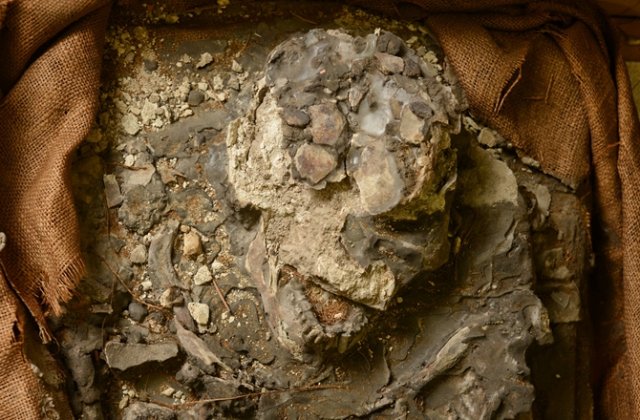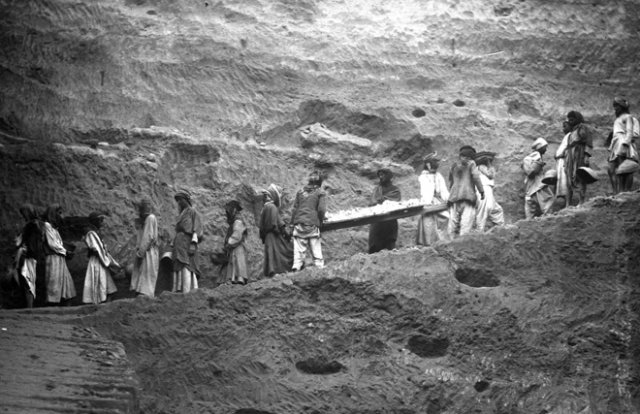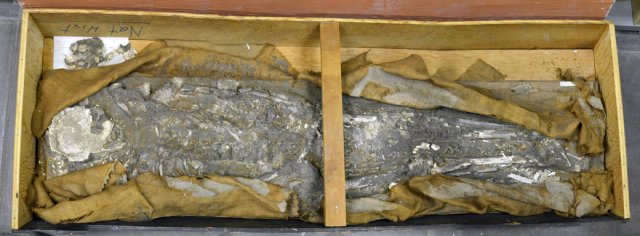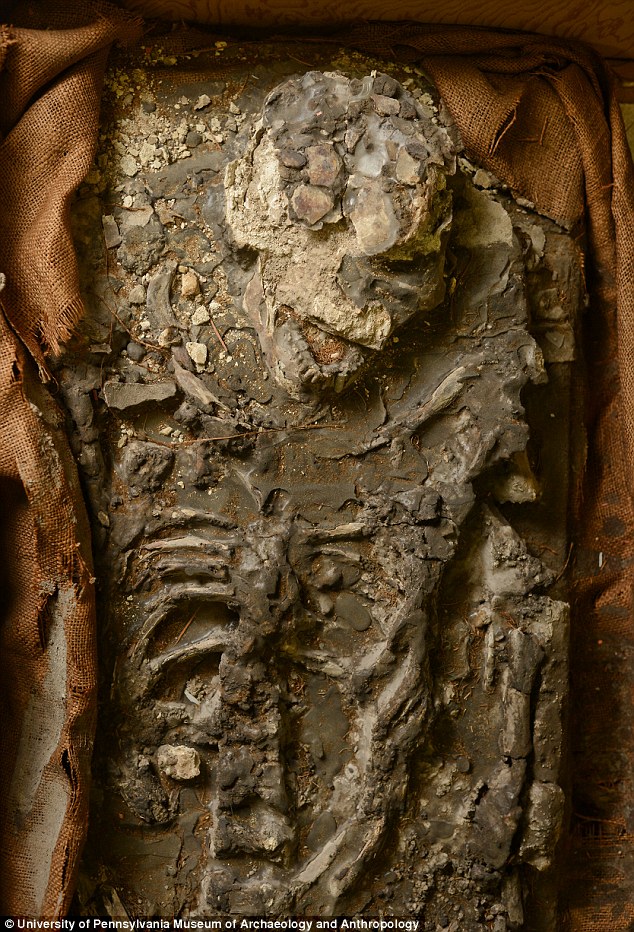A remarkable 6,500-year-old skeleton, dubbed the “Noah” skeleton, has been rediscovered, revealing a survivor of the Great Flood concealed within a museum
Nicknamed “Noah”, because it was found in an area that experienced a great flood, this extraordinary skeleton has been lying hidden in the basement of the Penn Museum for the last 85 years. All trace of its identifying documentation is unfortunately long gone.
Based on what it known, this rare skeleton was unearthed in 1929-30 by Sir Leonard Woolley’s joint Penn Museum/British Museum excavation team at the site of Ur in what is now southern Iraq.

Close-up of the “Noah “skull. The teeth are well preserved.
After Woolley discovered the Royal Cemetery, he kept digging. Around 40 feet down, he reached a layer of clean, water-lain silt. Digging further, Woolley found graves cut into the silt and eventually another silt layer. This “flood layer” was more than 10 feet deep.
Reaching below sea level, Woolley concluded that Ur had originally been a small island in a surrounding marsh. Then a great flood washed away the land.
The burial that produced the Penn museum skeleton was one of those cut into the deep silt.
This indicates the man, as well as other people in Ur, had lived after the flood.
The skeleton is about 2,000 years older than the materials and remains found in the famous Mesopotamian “royal tombs,” that Woolley found in the same Ur location.
The person was once a well-muscled male, about age 50 or older.
Skeletons from the period – 5500 to 4000 B.C.E. – are extremely rare, especially complete skeletons, Penn officials said.
Janet Monge, the curator who oversees the physical anthropology section of the museum in University City says she knew for years that the Penn Museum had quite the skeleton in its closet, a box of bones supinely displayed, carefully encased in wax, wrapped in burlap, and positioned on a board.
“Somebody took great pains to take a very fragmentary skeleton and bring it here. Therefore, it must be important”, Monge said.
Though, since the skeleton is much older than the Bible, “Utnapishtim” would have been more appropriate.

Workers carry the complete skeleton on its board up 50 feet of carved stairs and out of Pit F. Credit: Penn Museum
“He was named in the Gilgamesh epic as the man who survived the great flood,” William Hafford, Ur Digitization Project Manager at Penn.
According to Discovery News, “Hafford was able to reconstruct how the skeleton reached the museum. Woolley himself painstakingly removed the intact skeleton, covered it in wax, fastened it onto a piece of wood, and lifted it out with the surrounding dirt using a burlap sling.
He shipped the remains to London for examination, and then on to Philadelphia. There, the skeleton rested in a wooden box with no catalog card, or identifying number, for 85 years — one of 150,000 bone specimens in the museums possession.

Skeleton, object number 31-17-404, from grave PFG/Z at Ur; Consolidated with wax in the field, it was lifted whole, along with surrounding dirt. Photo: Penn Museum, 2014.
Complete skeletons from the Ubaid period are extremely rare. According to archaeologists, the re-discovered skeleton may open up new research possibilities.
“Today’s scientific techniques, unavailable in Woolley’s time, may provide new information about diet, ancestral origins, trauma, stress, and diseases of this poorly understood population,” the Penn museum said.
In those days, it was common that some items that came to the museum many decades ago to lacked full identification.

“The structure of museums is not like it is today, so they didn’t do the same kind of cataloging,” Monge said.
“Certainly, incomplete documentation is common,” Hafford said. “Completely unknown is less common.”
Now that Penn researchers know the identity of the skeleton and general time period in which the man lived, they can study the remains to learn more about diet, ancestral origins, trauma, stress, and diseases of people from that period. They will try to extract DNA, but they’ll start by getting a CT scan at the Hospital of the University of Pennsylvania to better view the bones.
Related Post
A shocking documentary proves that mermaids do exist
SHOCKING Revelation: Thuya, Mother of Queen Tiye, Was the Grandmother of Akhenaten and Tutankhamun—What Ancient Egyptian Secrets Did She Leave Behind?
Breaking News: Astonishing Discoveries at Karahan Tepe Confirm an Extraterrestrial Civilization is Hiding on Earth, and NO ONE Knows!
Breaking News: Researchers FINALLY Discover U.S. Navy Flight 19 After 75 Years Lost in the Bermuda Triangle!
NASA’s Secret Investigation: Uncovering the Astonishing Mystery of the UFO Crash on the Mountain!
Explosive UFO Docs LEAKED: Startling Proof That Aliens Ruled Ancient Egypt!